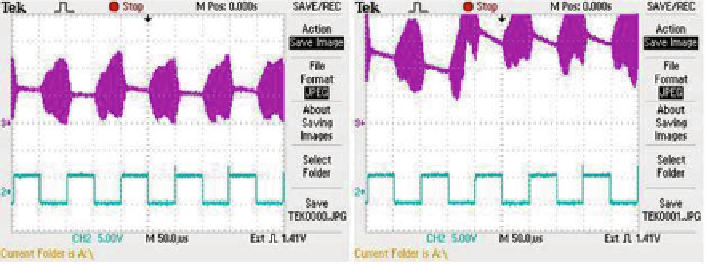Geoscience Reference
In-Depth Information
Fig. 6.17
Typical high-frequency
plasmoid electric potential at different
experimental con-
ditions.
SWT-1F.
Left
:
Longitudinal
charged
high-frequency
plasmoid
with
blue
halo
at
P
st
300 Torr,
V
ax
90 m/s.
Right
: Longitudinal charged high-frequency plasmoid with blue halo
at
P
st
300 Torr,
V
ax
140 m/s.
Violet voltage signal
;
blue
command modulation signal
Mark that it is possible to create a DC power supply by this plasma-vortex
converter. The main question is the efficiency of the plasma-vortex converter acting
in this regime. We plan to study the converter physics in detail in future experiments.
This study will probably help us to clarify the source of BL power supply.
6.10
Pressure Distribution in Swirl Flow
at High-Frequency Plasma-On and Plasma-Off
Conditions
The experimental results on temporal evolution of the static pressure inside the
plasma kernel in high-speed swirl flow at plasma on and plasma off are shown in
Fig.
6.18
. One can see that there was considerable static pressure increase up to 20-
50% (near its axis) at the high-frequency plasma-on. Note that the pressure jump
signal was the difference between the stagnation pressure measured by the Pitot
tube, and the static pressure measured inside the test section. So, the electric double
layer created on the plasma kernel surface can play an important role in the pressure
redistribution inside the kernel.
Therefore, it was revealed that the high-speed swirl flow parameters can be
considerably changed by the capacity-coupled high-frequency discharge plasma.
The obtained results may be used for flow control, lift control, advanced mixing,
plasma aerodynamics, and plasma-assisted combustion of gas reagments.

